SEO
7 Reasons Why Content Needs Amazing Images, Videos & Visuals

Humans are visual-oriented beings.
We use five critical senses daily to solve problems and get through our daily lives, each of which helps humans significantly.
But vision is responsible for 80% of everything humans learn, and similar numbers are likely for most animals with developed brains.
That’s why visual-rich media – photos, images, videos – have a huge impact on the success of written content and overarching content marketing strategies.
Visuals Communicate Ideas Faster & Easier
Eye-catching visuals captivate us; then, we use that focus to better understand the message that visual conveys – and who is behind the message.
This is why having visuals is so important in branding and marketing.
Visuals do the same for leads, sales, and the forces that drive them.
People consistently hold the things that are most attractive in life – those people, places, and products – in high regard. They’re sought after with great pride and determination. They’re popular and in demand. And they’re visually appealing, for better or worse.
Build your content the same way.
Start by properly planning your content with its messaging, audience, and goals in mind.
But never ignore the need for compelling visual content to supplement – or complete – each piece of content.
From the beginning, you should consider what kinds of images, infographics, videos, animations, and any other rich media could be added to your content to enhance messaging and further ensure it resonates with users.
Telling your audience is one thing; showing it while doing so makes the world of a difference.
There are many visual-rich media types that will improve your content exponentially. And the numbers support it.
Most of all, let’s not forget to lean on science.
Solely reading words can only go so far in storytelling; visuals are processed 60,000 times faster than text, so including them in your content can help pique your audience’s attention quickly.
Looking beyond blanket statistics, here are seven evidence-based reasons why content needs compelling visuals to fully and efficiently convey a message, tell a story, and create a connection.
1. Humans Prefer Visuals
People are visual creatures by nature.
It’s not just because of our short, modern-day attention spans that we tend to prefer video, animation, and imagery over text (because of how much faster and easier we can consume it).
It’s also because we can obtain and retain this information faster, better, and for longer.
Visuals are easier to digest, as well as easier to remember.
And they’re more available now than ever before.
With the growth of multi-device usage for people across the planet, it’s no surprise visual content has become vital to success.
It’s probably also why, in 2022, internet traffic from videos made up 82% of all global web traffic on Earth.
In today’s digital climate, we’re more likely to be quickly captivated by an image or video than by words on a page. That’s likely how humans have always been, at least since their introduction to the video.
There has been a dramatic shift in content (and content preferences) with the growth of faster phones, better picture quality, faster internet connections, and more content and content types available.
We can expect this to continue trending that way.
2. Visuals Create Connections
The right visuals can create strong connections.
With the fast-paced lives many people live, it’s harder now than ever to capture – and retain – attention spans. We need all the help we can get to ensure people are actually absorbing (watching, reading, hearing, etc.) the content we produce.
Visuals help us make those connections.
These connections – built upon emotion and messaging – become stronger with creative, stimulating visuals that are the backbone of marketing success.
Not only do visuals allow brands to enhance and clarify their messaging, but they also help solidify brands’ identities.
This is how brands become “household names,” recognizable anywhere in the wild.
And it’s why all digital assets a company owns should be branded before publication.
That way, when they are re-shared across the web, the right brand gets the credit for them while building that connection with its audience.
3. Visuals Generate More Organic Visibility
As Google search evolves, so do the ways people search and interact with it.
There are now more search verticals at the forefront of search.
Now more than ever, users know the varying ways to use search to their advantage depending on the subject they’re searching for and the stage of intent they’re at.
Both factors determine the results we see.
Marketers should be considering those (and other distinguishable factors) and the best way your messaging can be displayed in terms of how it appears on:
- Your webpages.
- Social media.
- Search.
When snippets have compelling visuals, they perform better. That’s why CTRs are higher for content that contains images.
Google is also continually transforming how its platform works and is presented, and, in turn, how humans interact with it is also transforming.
Since search results have become more personalized and dynamic, user interaction has changed. Visuals stand a better chance to be seen since their surface area has also increased across multiple search verticals.
That includes Google Discover, a curated news feed of online content delivered to Google users that the company’s automated systems think would be interesting and appealing to specific users.
And while many of the best practices for showing up in Discover are still up for debate, using high-quality imagery in pieces of content is a recommendation Google has pointed towards on several occasions for showing up – and earning clickthroughs – in Discover.
In addition to the uptick in searches coming from mobile devices, voice search continues to grow, too.
These types of searches represent additional chances for a brand’s rich media to show up, especially considering search results commonly vary based on device.
Many eyes also see a specific piece of content through social media shares, emails, and more, including the referral visits attributed to those backlinks.
4. Visuals Help Capture Short Attention Spans
While obvious, it’s probably the most important one on this list.
No matter how you slice it, humans don’t just want visuals – they need them.
The average person can get distracted (or bored) within a few seconds. That doesn’t give you much time to grab someone’s attention.
Video, infographics, and relevant, high-quality photos can help break through the noise and reach those with short attention spans.
Make sure you capture your audience’s attention fast!
But don’t stop there.
Ensure you publish and share useful content for your audience that is valuable and beneficial to them. Otherwise, you’re going to lose them.
5. Visuals Are More Memorable
Visuals don’t just stand out at first sight; they’re also easier to remember.
Add visuals to well-researched and useful content, and that content is much more likely to resonate with its audience over time.
The message being communicated in any piece of content – even its headline(s) – can be enhanced by relevant and memorable supplemental rich media.
Adding visuals to any presentation helps humans’ ability to recall it up to several days later by 65% and by 80% to recall it within just a few hours.
Remember when we used flashcards and other visuals in grade school to help us learn new topics? That’s because so many of us are visual learners who can comprehend and retain information better, faster, and easier through the use of visual aids.
This is the same.
Most humans retain visual information much better, clearer, and longer than we can solely with written words.
And, those visual connections often remain in place for a long time – sometimes for entire lives.
6. Visuals Can Help Drive Leads
Visual content can lead to increased engagement – and more engagement often means more leads.
Match this concept with a clear and consistent brand tone, and one of the most critical components of your content strategy will be in place.
But all aspects of the strategy need to make sense to generate real, quality leads. That includes using high-quality and relevant rich media to support your message and connect with your audience.
Use visuals as the tool they are and explain common questions or unique ideas efficiently.
There’s a reason visual assets in content marketing continue to increase yearly.
Plenty of evidence points to people’s favoritism for watching a video versus reading a bunch of text when learning about a new product or service.
Relevant rich media matched with the right written content can have incredible results. And, to drive leads through content marketing efforts, that should be the goal every time.
Beyond just including relevant visuals with content is the aspect of digital quality. This matter greatly as well.
The quality of product images is critical when people are browsing (then selecting) a product and will impact a user’s decision-making along the way.
Most people will see page image(s) before recognizing and reading words, including a product title.
Depending on that first-impression visual, they will either be turned on or off, then decide to stay, go, or buy/convert.
7. Content Can Be Repurposed Into A Variety of Rich Media Types
One challenge all marketers face is how to keep content fresh without too much reoccurring overhead (editing, shooting, color-correcting, etc.) – and without boring your audience by beating a dead horse.
That’s where repurposing content comes in.
There are various ways to repurpose data that is optimized for delivery on specific platforms/devices and for specific audiences, including various content forms for different stages of intent that make it possible to reach customers in all different stages of the buyer funnel.
Don’t be afraid to take survey data, write a blog post about your findings, then turn it into a pie chart – then an infographic, an animated video, and a meme, before talking about it on a podcast.
Get the most out of your content by repurposing it in a way that makes the most sense for both your content and audience.
Conclusion
It sounds dramatic, but visuals make a huge difference in the value of content.
Visuals affect how people digest content and how they understand it, retain it, and even engage with it.
Visuals also affect how that content appears in organic search and how people react to it.
Use this to your advantage and help people (and search engines) better understand your content more quickly and efficiently by using images and other visuals to enhance your messaging.
The numbers show just how much better rich media fares in the wild. Use it to your benefit, save money, and increase your brand following.
More Resources:
Featured Image: Kaspars Grinvalds/Shutterstock
SEO
How To Write ChatGPT Prompts To Get The Best Results

ChatGPT is a game changer in the field of SEO. This powerful language model can generate human-like content, making it an invaluable tool for SEO professionals.
However, the prompts you provide largely determine the quality of the output.
To unlock the full potential of ChatGPT and create content that resonates with your audience and search engines, writing effective prompts is crucial.
In this comprehensive guide, we’ll explore the art of writing prompts for ChatGPT, covering everything from basic techniques to advanced strategies for layering prompts and generating high-quality, SEO-friendly content.
Writing Prompts For ChatGPT
What Is A ChatGPT Prompt?
A ChatGPT prompt is an instruction or discussion topic a user provides for the ChatGPT AI model to respond to.
The prompt can be a question, statement, or any other stimulus to spark creativity, reflection, or engagement.
Users can use the prompt to generate ideas, share their thoughts, or start a conversation.
ChatGPT prompts are designed to be open-ended and can be customized based on the user’s preferences and interests.
How To Write Prompts For ChatGPT
Start by giving ChatGPT a writing prompt, such as, “Write a short story about a person who discovers they have a superpower.”
ChatGPT will then generate a response based on your prompt. Depending on the prompt’s complexity and the level of detail you requested, the answer may be a few sentences or several paragraphs long.
Use the ChatGPT-generated response as a starting point for your writing. You can take the ideas and concepts presented in the answer and expand upon them, adding your own unique spin to the story.
If you want to generate additional ideas, try asking ChatGPT follow-up questions related to your original prompt.
For example, you could ask, “What challenges might the person face in exploring their newfound superpower?” Or, “How might the person’s relationships with others be affected by their superpower?”
Remember that ChatGPT’s answers are generated by artificial intelligence and may not always be perfect or exactly what you want.
However, they can still be a great source of inspiration and help you start writing.
Must-Have GPTs Assistant
I recommend installing the WebBrowser Assistant created by the OpenAI Team. This tool allows you to add relevant Bing results to your ChatGPT prompts.
This assistant adds the first web results to your ChatGPT prompts for more accurate and up-to-date conversations.
It is very easy to install in only two clicks. (Click on Start Chat.)
For example, if I ask, “Who is Vincent Terrasi?,” ChatGPT has no answer.
With WebBrower Assistant, the assistant creates a new prompt with the first Bing results, and now ChatGPT knows who Vincent Terrasi is.
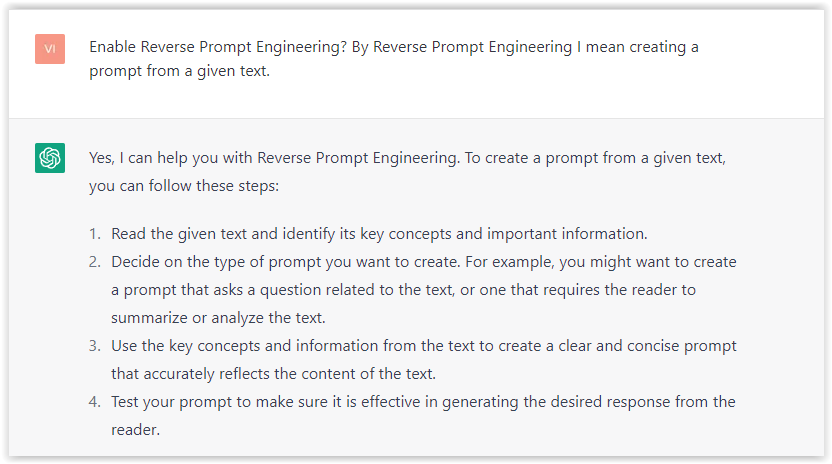 Screenshot from ChatGPT, March 2023
Screenshot from ChatGPT, March 2023You can test other GPT assistants available in the GPTs search engine if you want to use Google results.
Master Reverse Prompt Engineering
ChatGPT can be an excellent tool for reverse engineering prompts because it generates natural and engaging responses to any given input.
By analyzing the prompts generated by ChatGPT, it is possible to gain insight into the model’s underlying thought processes and decision-making strategies.
One key benefit of using ChatGPT to reverse engineer prompts is that the model is highly transparent in its decision-making.
This means that the reasoning and logic behind each response can be traced, making it easier to understand how the model arrives at its conclusions.
Once you’ve done this a few times for different types of content, you’ll gain insight into crafting more effective prompts.
Prepare Your ChatGPT For Generating Prompts
First, activate the reverse prompt engineering.
- Type the following prompt: “Enable Reverse Prompt Engineering? By Reverse Prompt Engineering I mean creating a prompt from a given text.”
 Screenshot from ChatGPT, March 2023
Screenshot from ChatGPT, March 2023ChatGPT is now ready to generate your prompt. You can test the product description in a new chatbot session and evaluate the generated prompt.
- Type: “Create a very technical reverse prompt engineering template for a product description about iPhone 11.”
 Screenshot from ChatGPT, March 2023
Screenshot from ChatGPT, March 2023The result is amazing. You can test with a full text that you want to reproduce. Here is an example of a prompt for selling a Kindle on Amazon.
- Type: “Reverse Prompt engineer the following {product), capture the writing style and the length of the text :
product =”
 Screenshot from ChatGPT, March 2023
Screenshot from ChatGPT, March 2023I tested it on an SEJ blog post. Enjoy the analysis – it is excellent.
- Type: “Reverse Prompt engineer the following {text}, capture the tone and writing style of the {text} to include in the prompt :
text = all text coming from https://www.searchenginejournal.com/google-bard-training-data/478941/”
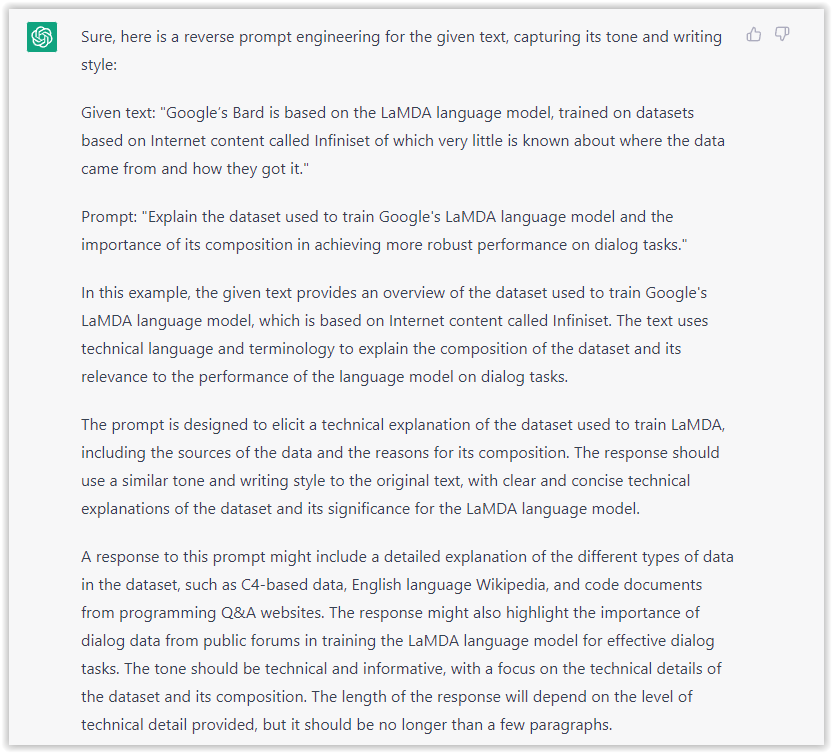 Screenshot from ChatGPT, March 2023
Screenshot from ChatGPT, March 2023But be careful not to use ChatGPT to generate your texts. It is just a personal assistant.
Go Deeper
Prompts and examples for SEO:
- Keyword research and content ideas prompt: “Provide a list of 20 long-tail keyword ideas related to ‘local SEO strategies’ along with brief content topic descriptions for each keyword.”
- Optimizing content for featured snippets prompt: “Write a 40-50 word paragraph optimized for the query ‘what is the featured snippet in Google search’ that could potentially earn the featured snippet.”
- Creating meta descriptions prompt: “Draft a compelling meta description for the following blog post title: ’10 Technical SEO Factors You Can’t Ignore in 2024′.”
Important Considerations:
- Always Fact-Check: While ChatGPT can be a helpful tool, it’s crucial to remember that it may generate inaccurate or fabricated information. Always verify any facts, statistics, or quotes generated by ChatGPT before incorporating them into your content.
- Maintain Control and Creativity: Use ChatGPT as a tool to assist your writing, not replace it. Don’t rely on it to do your thinking or create content from scratch. Your unique perspective and creativity are essential for producing high-quality, engaging content.
- Iteration is Key: Refine and revise the outputs generated by ChatGPT to ensure they align with your voice, style, and intended message.
Additional Prompts for Rewording and SEO:
– Rewrite this sentence to be more concise and impactful.
– Suggest alternative phrasing for this section to improve clarity.
– Identify opportunities to incorporate relevant internal and external links.
– Analyze the keyword density and suggest improvements for better SEO.
Remember, while ChatGPT can be a valuable tool, it’s essential to use it responsibly and maintain control over your content creation process.
Experiment And Refine Your Prompting Techniques
Writing effective prompts for ChatGPT is an essential skill for any SEO professional who wants to harness the power of AI-generated content.
Hopefully, the insights and examples shared in this article can inspire you and help guide you to crafting stronger prompts that yield high-quality content.
Remember to experiment with layering prompts, iterating on the output, and continually refining your prompting techniques.
This will help you stay ahead of the curve in the ever-changing world of SEO.
More resources:
Featured Image: Tapati Rinchumrus/Shutterstock
SEO
Measuring Content Impact Across The Customer Journey
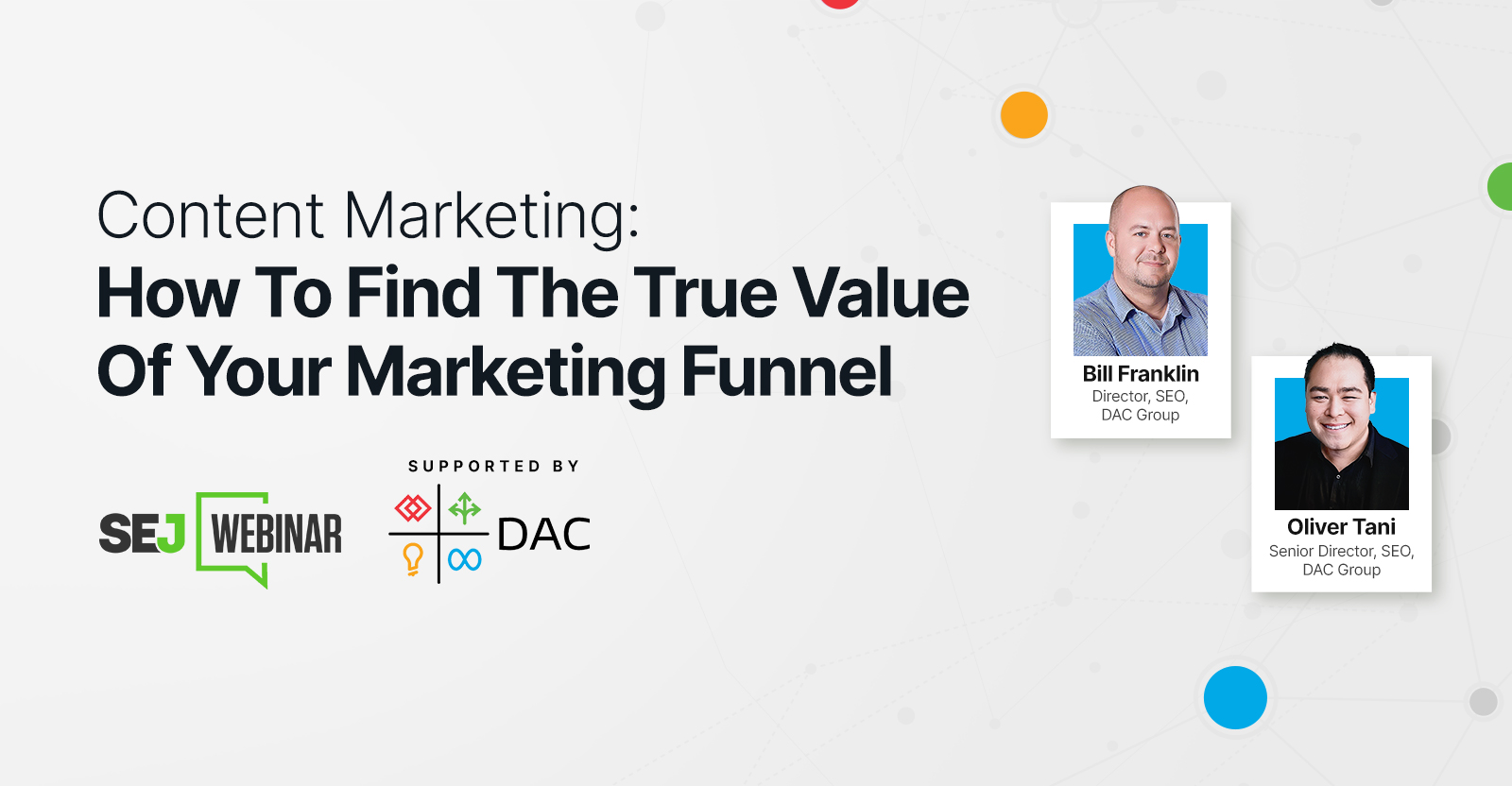
Understanding the impact of your content at every touchpoint of the customer journey is essential – but that’s easier said than done. From attracting potential leads to nurturing them into loyal customers, there are many touchpoints to look into.
So how do you identify and take advantage of these opportunities for growth?
Watch this on-demand webinar and learn a comprehensive approach for measuring the value of your content initiatives, so you can optimize resource allocation for maximum impact.
You’ll learn:
- Fresh methods for measuring your content’s impact.
- Fascinating insights using first-touch attribution, and how it differs from the usual last-touch perspective.
- Ways to persuade decision-makers to invest in more content by showcasing its value convincingly.
With Bill Franklin and Oliver Tani of DAC Group, we unravel the nuances of attribution modeling, emphasizing the significance of layering first-touch and last-touch attribution within your measurement strategy.
Check out these insights to help you craft compelling content tailored to each stage, using an approach rooted in first-hand experience to ensure your content resonates.
Whether you’re a seasoned marketer or new to content measurement, this webinar promises valuable insights and actionable tactics to elevate your SEO game and optimize your content initiatives for success.
View the slides below or check out the full webinar for all the details.
SEO
How to Find and Use Competitor Keywords

Competitor keywords are the keywords your rivals rank for in Google’s search results. They may rank organically or pay for Google Ads to rank in the paid results.
Knowing your competitors’ keywords is the easiest form of keyword research. If your competitors rank for or target particular keywords, it might be worth it for you to target them, too.
There is no way to see your competitors’ keywords without a tool like Ahrefs, which has a database of keywords and the sites that rank for them. As far as we know, Ahrefs has the biggest database of these keywords.
How to find all the keywords your competitor ranks for
- Go to Ahrefs’ Site Explorer
- Enter your competitor’s domain
- Go to the Organic keywords report
The report is sorted by traffic to show you the keywords sending your competitor the most visits. For example, Mailchimp gets most of its organic traffic from the keyword “mailchimp.”


Since you’re unlikely to rank for your competitor’s brand, you might want to exclude branded keywords from the report. You can do this by adding a Keyword > Doesn’t contain filter. In this example, we’ll filter out keywords containing “mailchimp” or any potential misspellings:
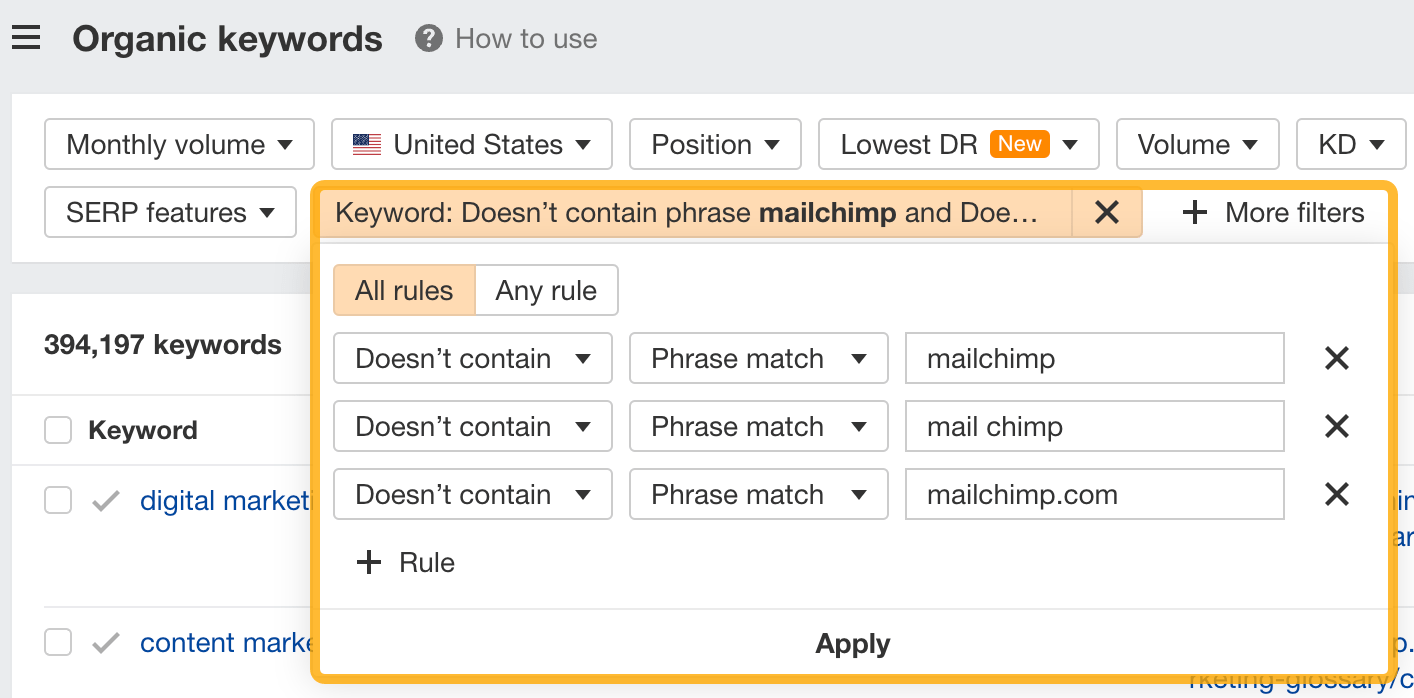

If you’re a new brand competing with one that’s established, you might also want to look for popular low-difficulty keywords. You can do this by setting the Volume filter to a minimum of 500 and the KD filter to a maximum of 10.


How to find keywords your competitor ranks for, but you don’t
- Go to Competitive Analysis
- Enter your domain in the This target doesn’t rank for section
- Enter your competitor’s domain in the But these competitors do section


Hit “Show keyword opportunities,” and you’ll see all the keywords your competitor ranks for, but you don’t.


You can also add a Volume and KD filter to find popular, low-difficulty keywords in this report.


How to find keywords multiple competitors rank for, but you don’t
- Go to Competitive Analysis
- Enter your domain in the This target doesn’t rank for section
- Enter the domains of multiple competitors in the But these competitors do section
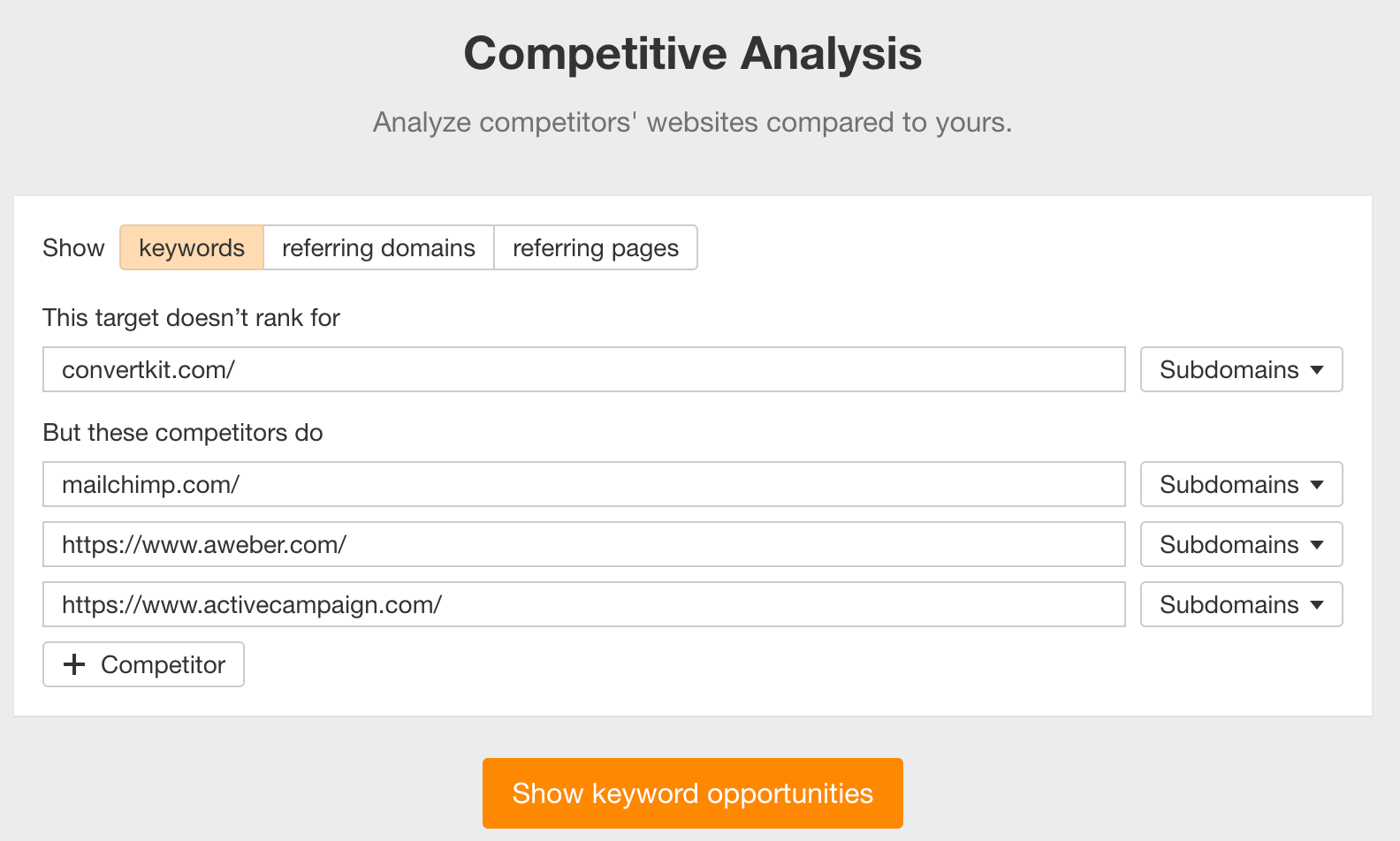

You’ll see all the keywords that at least one of these competitors ranks for, but you don’t.


You can also narrow the list down to keywords that all competitors rank for. Click on the Competitors’ positions filter and choose All 3 competitors:


- Go to Ahrefs’ Site Explorer
- Enter your competitor’s domain
- Go to the Paid keywords report
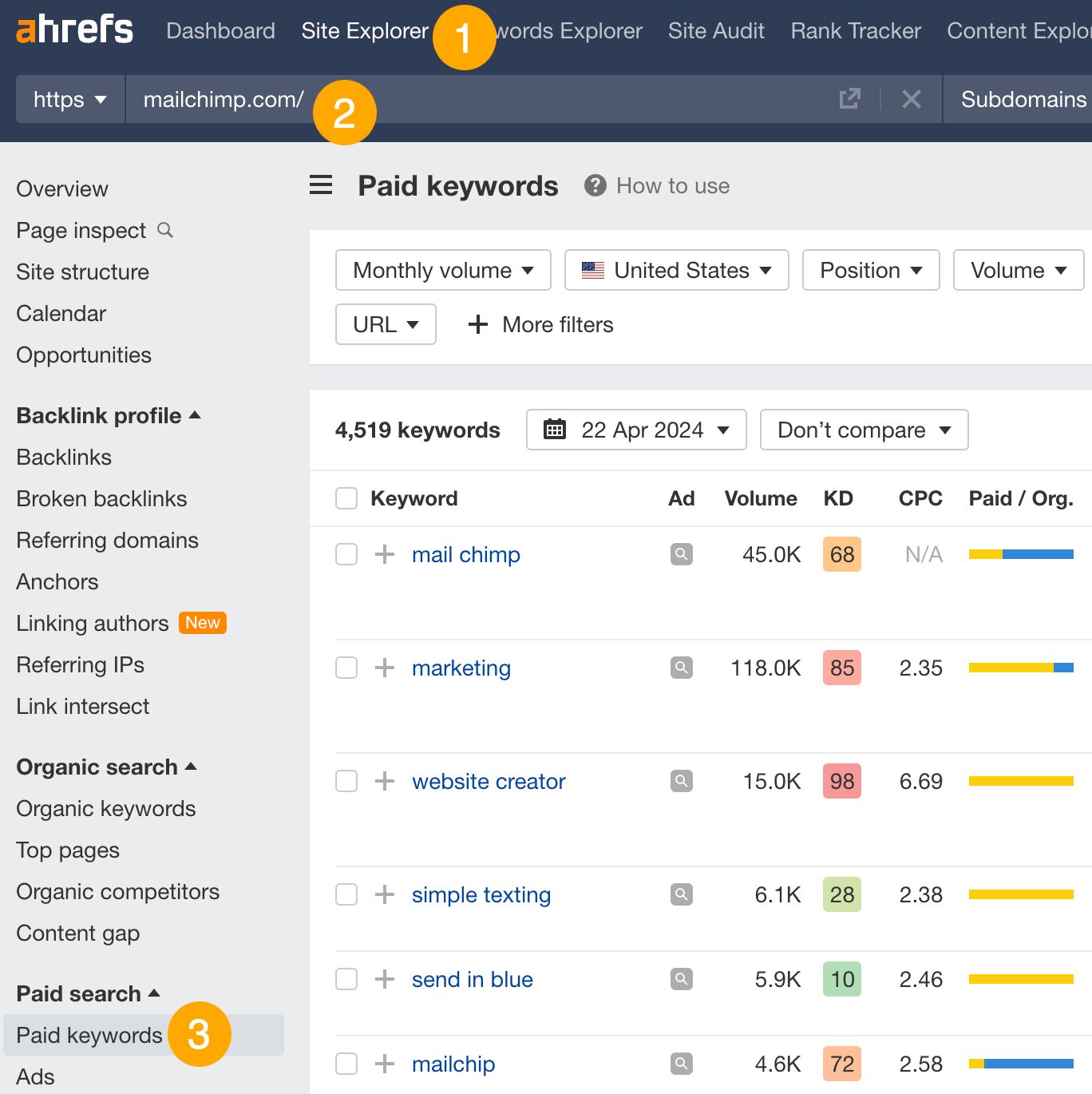

This report shows you the keywords your competitors are targeting via Google Ads.
Since your competitor is paying for traffic from these keywords, it may indicate that they’re profitable for them—and could be for you, too.
You know what keywords your competitors are ranking for or bidding on. But what do you do with them? There are basically three options.
1. Create pages to target these keywords
You can only rank for keywords if you have content about them. So, the most straightforward thing you can do for competitors’ keywords you want to rank for is to create pages to target them.
However, before you do this, it’s worth clustering your competitor’s keywords by Parent Topic. This will group keywords that mean the same or similar things so you can target them all with one page.
Here’s how to do that:
- Export your competitor’s keywords, either from the Organic Keywords or Content Gap report
- Paste them into Keywords Explorer
- Click the “Clusters by Parent Topic” tab


For example, MailChimp ranks for keywords like “what is digital marketing” and “digital marketing definition.” These and many others get clustered under the Parent Topic of “digital marketing” because people searching for them are all looking for the same thing: a definition of digital marketing. You only need to create one page to potentially rank for all these keywords.
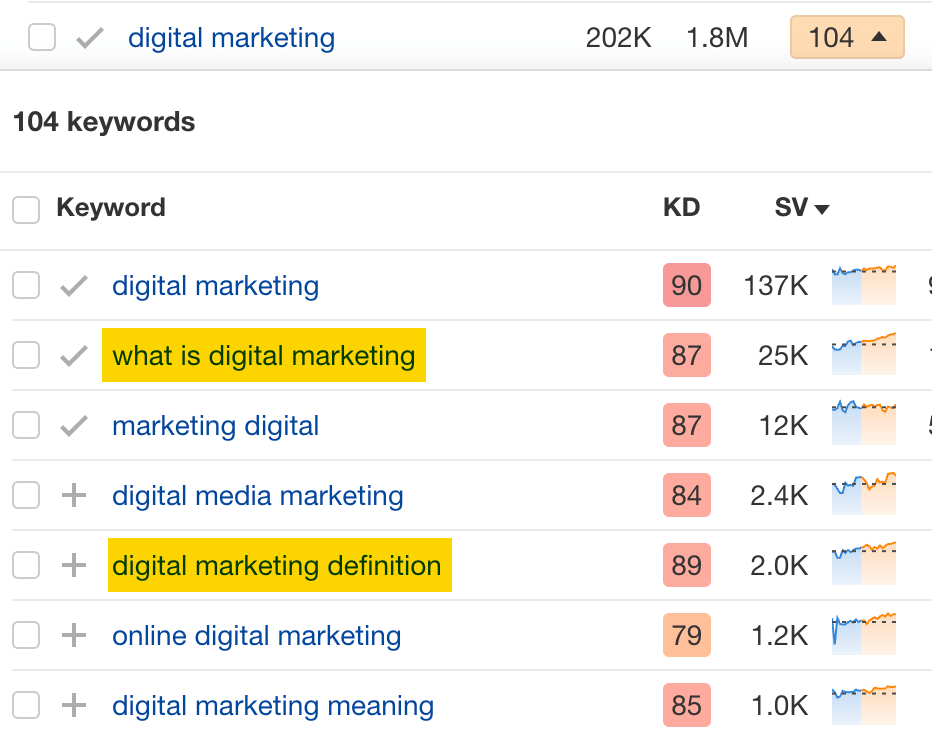

2. Optimize existing content by filling subtopics
You don’t always need to create new content to rank for competitors’ keywords. Sometimes, you can optimize the content you already have to rank for them.
How do you know which keywords you can do this for? Try this:
- Export your competitor’s keywords
- Paste them into Keywords Explorer
- Click the “Clusters by Parent Topic” tab
- Look for Parent Topics you already have content about
For example, if we analyze our competitor, we can see that seven keywords they rank for fall under the Parent Topic of “press release template.”


If we search our site, we see that we already have a page about this topic.


If we click the caret and check the keywords in the cluster, we see keywords like “press release example” and “press release format.”
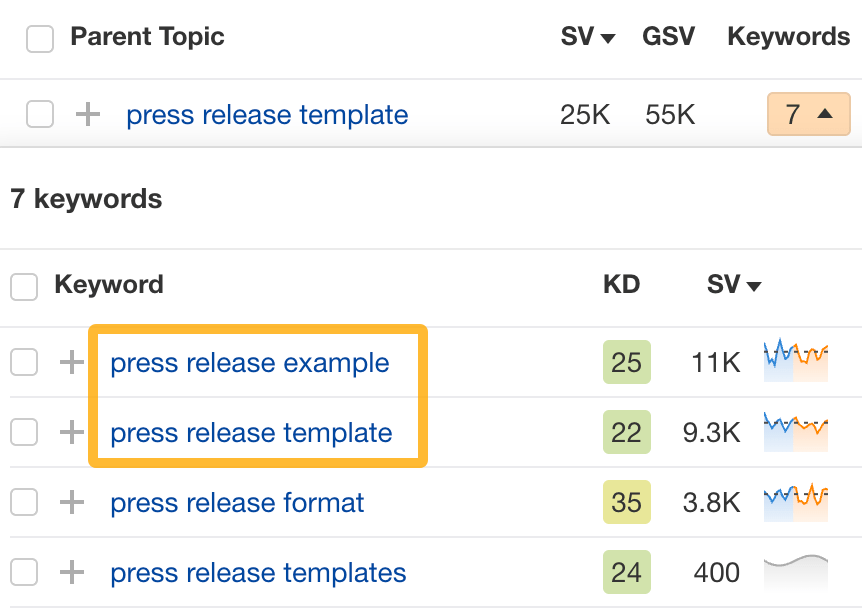

To rank for the keywords in the cluster, we can probably optimize the page we already have by adding sections about the subtopics of “press release examples” and “press release format.”
3. Target these keywords with Google Ads
Paid keywords are the simplest—look through the report and see if there are any relevant keywords you might want to target, too.
For example, Mailchimp is bidding for the keyword “how to create a newsletter.”


If you’re ConvertKit, you may also want to target this keyword since it’s relevant.
If you decide to target the same keyword via Google Ads, you can hover over the magnifying glass to see the ads your competitor is using.
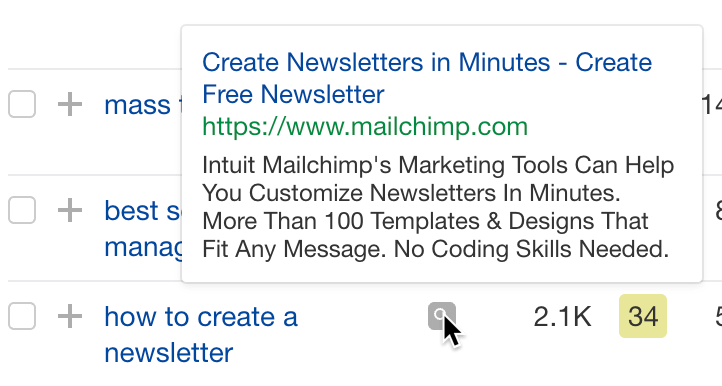

You can also see the landing page your competitor directs ad traffic to under the URL column.


Learn more
Check out more tutorials on how to do competitor keyword analysis:
-

 PPC6 days ago
PPC6 days ago19 Best SEO Tools in 2024 (For Every Use Case)
-
SEARCHENGINES7 days ago
Daily Search Forum Recap: April 17, 2024
-
SEARCHENGINES5 days ago
Daily Search Forum Recap: April 19, 2024
-
SEARCHENGINES6 days ago
Daily Search Forum Recap: April 18, 2024
-

 MARKETING6 days ago
MARKETING6 days agoEcommerce evolution: Blurring the lines between B2B and B2C
-

 WORDPRESS5 days ago
WORDPRESS5 days agoHow to Make $5000 of Passive Income Every Month in WordPress
-

 SEO6 days ago
SEO6 days ago2024 WordPress Vulnerability Report Shows Errors Sites Keep Making
-

 WORDPRESS6 days ago
WORDPRESS6 days ago10 Amazing WordPress Design Resouces – WordPress.com News














